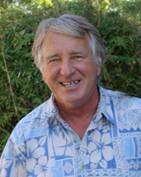 |
David Keith Todd Distinguished LecturerUsing Disparate, Process-Oriented Data to Solve Hydrologic ProblemsJohn Izbicki Research Hydrologist Thursday, April 30th, 2015 |
||
|
|||
|
Groundwater hydrologists have traditionally incorporated data from a wide range of disciplines into their work, often skillfully integrating geology, chemistry, physics, and other disciplines to solve hydrologic problems. Information from each discipline has strengths and limitations; collaboration between scientists having different skill sets can help interpret the disparate data sets developed by scientists from diverse backgrounds. These data sets are often process-oriented, and may incorporate results from laboratory and field-scale experiments, or integrate high-frequency data collected across a range of physical and temporal scales. As such, process-oriented data may differ greatly in scale and scope from more traditional hydrologic data collected in response to regulatory-driven mandates. For the purposes of this presentation, the specifics of groundwater source, movement, and age; trace-element occurrence, mobility, and pathways to wells; and anthropogenic contaminant movement through, and reaction within, the unsaturated and saturated zones (for example) are less important than the process-oriented approach used to understand and address these issues. The goal of process-oriented work and collaboration is to produce “more-correct” interpretations, in support of traditional field-data and model analyses, than is possible for individuals having limited perspectives and skill sets working alone or in “bureaucratic silos”. Over the years, large societally-important problems have traditionally driven basic, multidisciplinary, process-oriented research. Successful solutions to these large problems have often required the creation of diverse data sets and a high degree of collaborative interpretation by numerous researchers. For local-scale agencies responsible for addressing smaller-scale hydrologic problems, scientific collaboration is expensive, and process-oriented work often appears excessively detailed or unnecessary. Why not simply respond solely to regulatory-driven mandates by just measuring water levels or only reporting data on regulated contaminants? However, as even small-scale hydrologic problems have become increasingly complex and as regulatory demands increase, the challenge is to apply the optimal mix of innovative and basic science, collaboration, and communication to solve those problems. Dr. John Izbicki has worked for the U.S. Geological Survey for more than 30 years in Maryland, Massachusetts, and California. In 2000, while working for the USGS, he obtained his Ph.D. in Soil Physics from University of California, Riverside. Within California, Dr. Izbicki’s studies have focused on understanding the physical hydrology of coastal and desert aquifer systems primarily through the application of chemical and isotopic tracers. Recent work includes studies of managed aquifer recharge, trace-element occurrence and management in aquifers, submarine groundwater discharge, and bacterial source identification in urban streams and near-shore ocean water. Dr. Izbicki has several patents, published more than 100 U.S. Geological Survey reports and journal articles, and worked with the International Atomic Energy Agency and the Indian Government. The David Keith Todd Distinguished Lectures are supported by GRA, sponsor contributions, speakers organizations and hosting academic institutions. Opportunities for 2015 Lecture Series sponsorship exist; please contact loboyle (at) geosyntec.com for further information. |
|||

